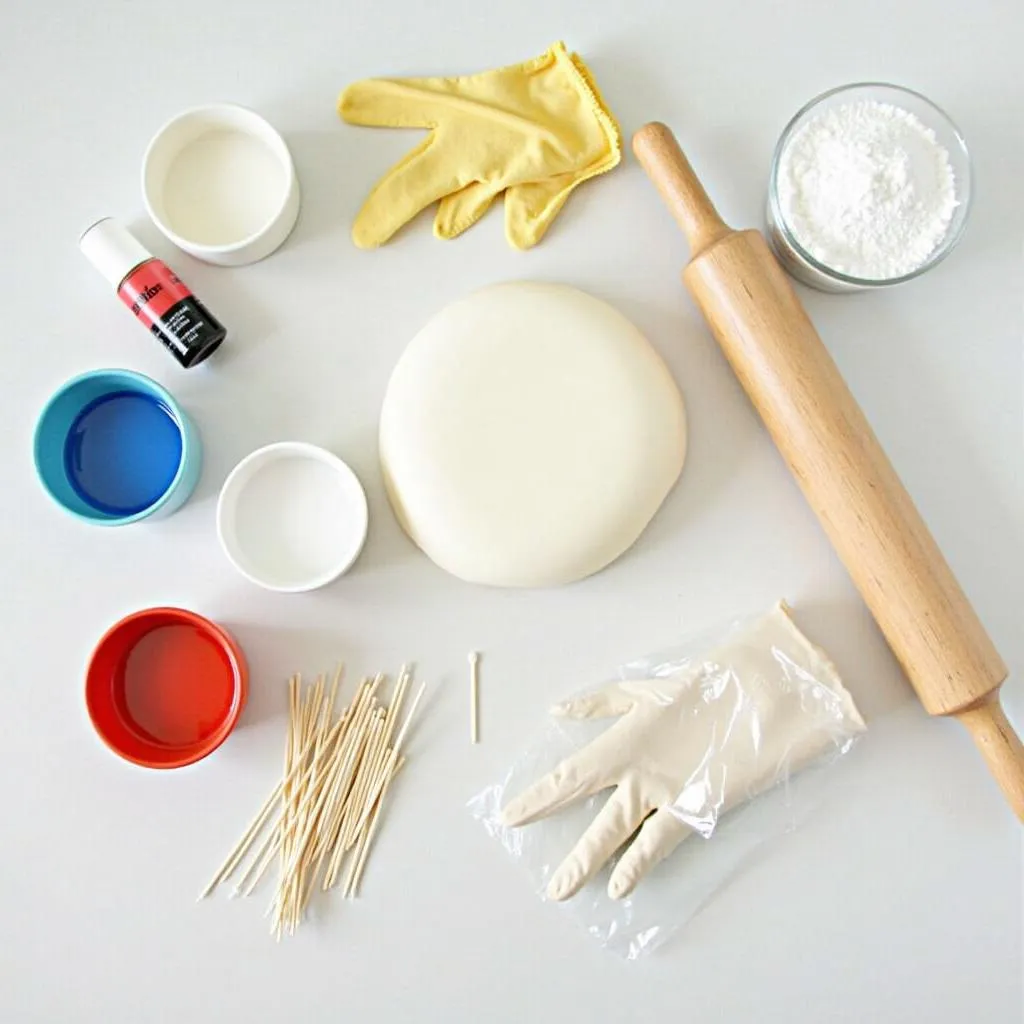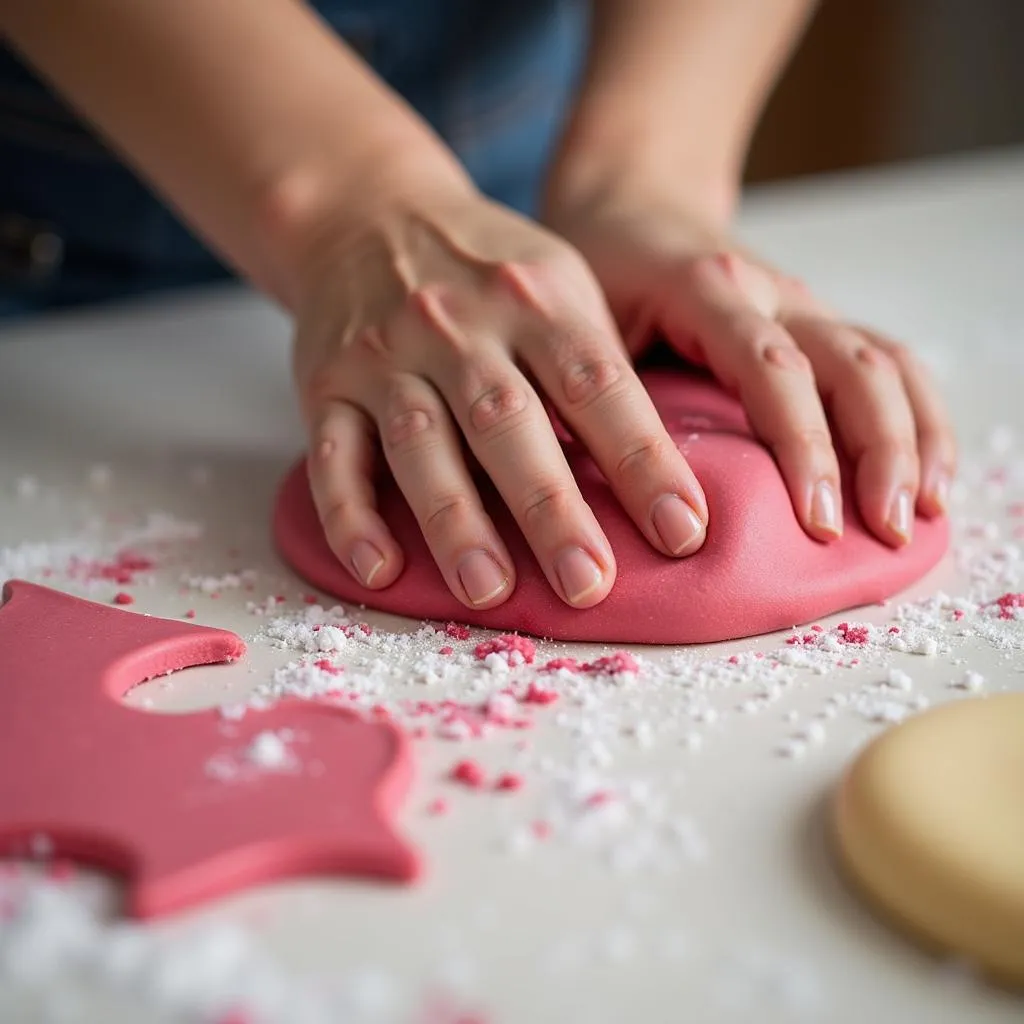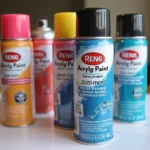Coloring marzipan opens up a world of creativity when it comes to decorating cakes, cupcakes, and cookies. Whether you’re a seasoned baker or a beginner, learning how to color marzipan effectively will elevate your dessert decorating game. This guide will provide you with all the tips and techniques you need to transform plain marzipan into vibrant edible masterpieces.
Choosing the Right Marzipan for Coloring
Not all marzipan is created equal when it comes to coloring. Some brands contain more oil, which can affect the vibrancy and consistency of the color.
- Look for high-quality marzipan: A smooth and pliable texture will ensure even color distribution.
- Opt for a light-colored marzipan: White marzipan is the ideal base for achieving vibrant colors.
Essential Tools and Ingredients
Before you start coloring your marzipan, gather the following tools and ingredients:
- Marzipan: White or light-colored marzipan
- Food coloring: Gel or paste food coloring is recommended for intense colors
- Powdered sugar: To prevent stickiness
- Gloves: To protect your hands from staining
- Toothpicks: For adding and mixing colors
- Small bowls: For mixing different colors
- Rolling pin: For rolling out the marzipan
- Plastic wrap: For storing the marzipan
 Essential tools and ingredients for coloring marzipan
Essential tools and ingredients for coloring marzipan
Step-by-Step Guide to Coloring Marzipan
- Knead the marzipan: Knead the marzipan for a few minutes until it becomes soft and pliable. This will help distribute the color evenly.
- Add food coloring: Dip a toothpick into the gel or paste food coloring and add a small amount to the marzipan. A little goes a long way, so start with a small amount and add more as needed.
- Knead and mix: Fold the marzipan over itself and knead thoroughly until the color is evenly distributed. Use your hands to press and work the color into the marzipan. If you’re using your hands, wear gloves to prevent staining.
- Adjust the color: If the color is too light, add more food coloring. If it’s too dark, add a small amount of white marzipan to lighten it.
- Wrap and rest: Once you’ve achieved the desired color, wrap the marzipan in plastic wrap and let it rest for about 15 minutes. This will allow the color to deepen and the marzipan to become more workable.
Tips and Tricks for Coloring Marzipan
- Use gel or paste food coloring: Gel and paste food coloring provide the most intense and vibrant colors compared to liquid food coloring.
- Start with small amounts: Food coloring is concentrated, so start with a small amount and gradually add more until you achieve the desired shade.
- Knead thoroughly: Kneading the marzipan well is crucial for even color distribution. Make sure there are no streaks or blotches.
- Create custom colors: Mix different food coloring colors to create custom shades. For example, mix red and yellow to create orange, or blue and yellow to create green.
- Dust with powdered sugar: If the marzipan becomes sticky, dust it lightly with powdered sugar to prevent it from sticking to your hands or work surface.
 Kneading marzipan for even color distribution
Kneading marzipan for even color distribution
Creating Patterns and Designs
Colored marzipan can be rolled, cut, and shaped to create a variety of decorative elements.
- Marzipan flowers: Use a flower cutter to create marzipan flowers in different colors.
- Stripes and swirls: Roll out different colors of marzipan and layer them together. Then, roll them up into a log and slice into rounds to create stripes or swirls.
- Marbling effect: Combine small amounts of different colored marzipan and knead them together lightly to create a marbled effect.
Troubleshooting Common Coloring Issues
Streaks or blotches: This can happen if the food coloring isn’t kneaded into the marzipan thoroughly. Continue kneading until the color is evenly distributed.
Color too light: Add more food coloring to deepen the shade.
Color too dark: Add a small amount of white marzipan to lighten the color.
Marzipan too sticky: Dust lightly with powdered sugar.
Expert Insights
“When coloring marzipan, patience is key,” says renowned pastry chef, Emily Carter. “Don’t be afraid to experiment with different colors and techniques to create unique and eye-catching designs.”
Conclusion
Coloring marzipan is a fun and rewarding way to add a personal touch to your baked creations. By following these tips and techniques, you can create vibrant and beautiful marzipan decorations that will impress your guests. Remember to be creative and have fun!
FAQs
Q: Can I use liquid food coloring to color marzipan?
A: While you can use liquid food coloring, it can make the marzipan sticky and may not produce as vibrant colors as gel or paste food coloring.
Q: How long does colored marzipan last?
A: Colored marzipan can be stored in an airtight container at room temperature for up to 2 weeks.
Q: Can I freeze colored marzipan?
A: Yes, you can freeze colored marzipan for up to 2 months. Thaw it in the refrigerator before using.
Q: What can I do with leftover colored marzipan?
A: Leftover colored marzipan can be rolled into balls and dipped in chocolate, or used to make marzipan truffles.
Q: How do I clean up food coloring stains?
A: Food coloring can stain hands and surfaces. Wash your hands thoroughly with soap and water. To remove stains from surfaces, use a mixture of baking soda and water.
Need More Help?
For personalized advice and guidance on coloring marzipan, feel free to contact us at 0373298888 or email us at [email protected]. Our team of experts at Color Box Hanoi is available 24/7 to assist you with all your color and design needs. You can also visit us at our store located at 86 Cau Giay, Hanoi. We’re always happy to help!

